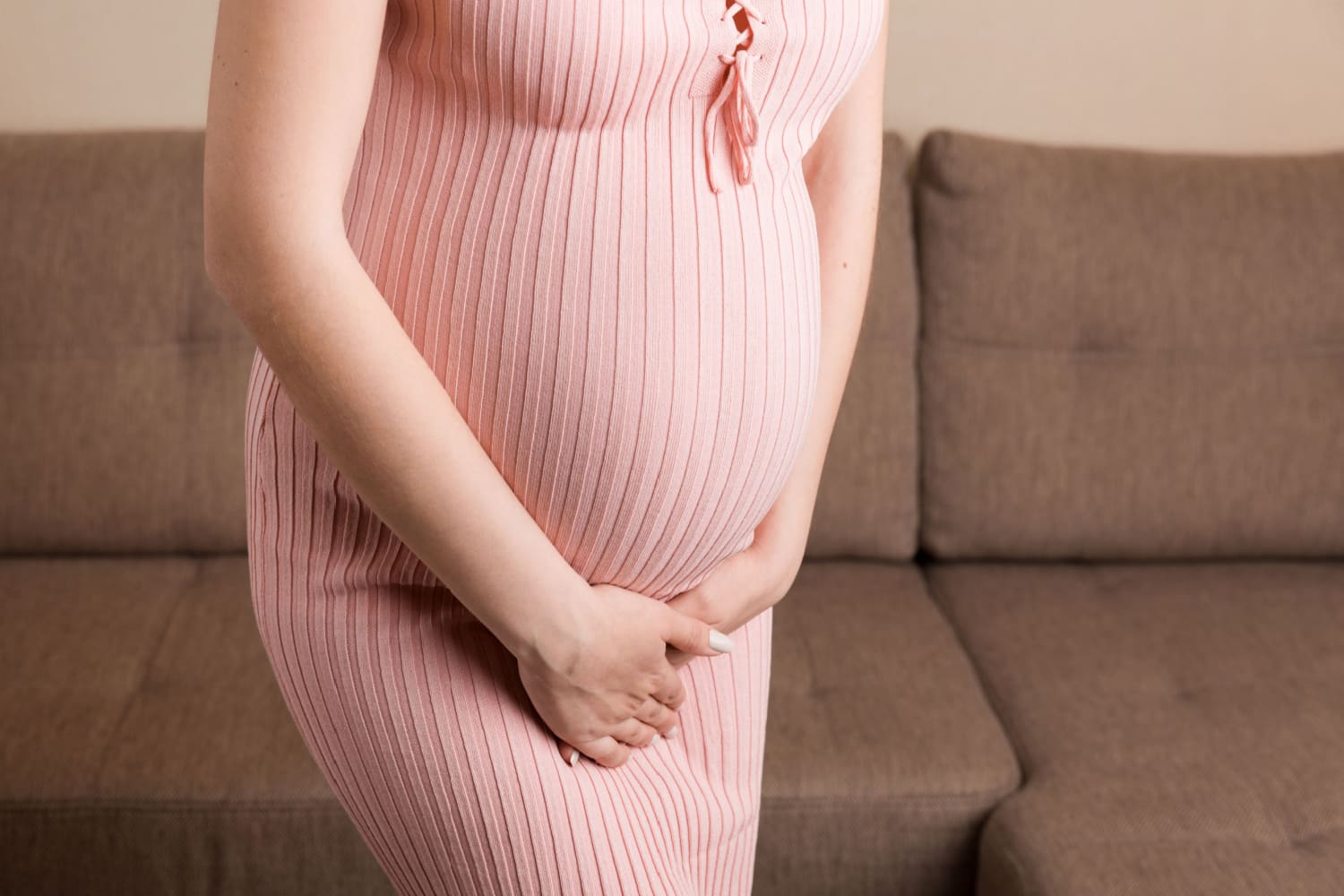
Carpal Tunnel Syndrome During Pregnancy
5 min readWritten by Editorial Team


Carpal tunnel syndrome (CTS) is a medical circumstance that is pretty common among people who are more often than not linked with work that demands repetitious hand movements, like computer programmers. It’s not uncommon for women to develop carpal tunnel syndrome during pregnancy, especially during the second half, of course, due to an entirely different cause.
The prevalence of carpal tunnel syndrome in pregnant women is higher than in the general population, at 31% to 62%. Symptoms often manifest after 30 weeks of pregnancy. Treatments like splinting, occupational therapy, and taking acetaminophen usually provide relief. The majority of women will begin feeling better within 12 months after giving birth. It may take longer for some women.
In This Article
- What Is Carpal Tunnel?
- What Is Carpal Tunnel Syndrome?
- Causes Of Carpal Tunnel Syndrome During Pregnancy
- Symptoms Of Carpal Tunnel Syndrome
- What Is The Effect Of Carpal Tunnel Syndrome On The Unborn Baby?
- How Can I Get Relief From Carpal Tunnel Pain During Pregnancy?
- What Are The Treatment Options For CTS?
- When Should I Seek Medical Attention?
- FAQ’s
What Is Carpal Tunnel?
The carpal tunnel is a small passage in the ‘palm’ side of the wrist, where the forearm meets the hand. Small bones and a strong band of connective tissue, the flexor retinaculum, which arches over the carpal bones, covering them, together form the carpal tunnel.
Several tendons, blood vessels, and nerves, including the median nerve that controls sensation and movement of the hand, pass through this tunnel.
What Is Carpal Tunnel Syndrome?

As we already explained, nine long flexor tendons pass through the carpal tunnel. If any of these tendons swell or are damaged, the tunnel becomes narrow compressing the median nerve. This will result in pain and numbness in the palm side of the index, middle, and ring fingers.
The pain that starts at the wrist can radiate towards your upper arm. You can feel that a dull ache comes and goes during the day, often worsening at night. In severe cases, your hands might feel weak to hold or lift things, or you may find yourself getting clumsier with your hands.
Causes Of Carpal Tunnel Syndrome During Pregnancy
During pregnancy, carpal tunnel syndrome is brought about by the collection of fluid in the tissues (edema). Some of this fluid can gather in the carpal tunnel, pressurizing and compressing the median nerve, which results in pain and numbness in your hands and fingers.
Around 60% of pregnant women are found to experience the symptoms of carpal tunnel syndrome. Because fluid retention maximizes during the second trimester, the symptoms are also found to worsen during the same time.
Here are some facts regarding carpal syndrome during pregnancy:
- CTS usually happens during the second half of pregnancy.
- It usually disappears after delivery, though it is not unusual for the CTS to continue a few days after delivery until the hormone and body fluid levels comes back to normal.
- If CTS is experienced during one pregnancy, chances are higher for experiencing it in the following pregnancy too.
- Multiple pregnancies increase the chances of CTS.
Symptoms Of Carpal Tunnel Syndrome

Symptoms vary from person to person. The pain can be mild, moderate, dull, or severe, depending on the pressure and compression undergone by the median nerve. Carpal tunnel syndrome may affect one or both hands. The symptoms generally get worse during the night or early morning.
The main symptoms of carpal tunnel syndrome in the course of pregnancy are:
- Torment/throbbing in the fingers, wrists, or lower arm.
- Swollen fingers with a burning sensation.
- Difficulty in holding objects.
- Difficult to attempt tasks that involve small parts, which need the coordination of the fingers.
- Dull pain worsens during the night.
What Is The Effect Of Carpal Tunnel Syndrome On The Unborn Baby?
Though carpal tunnel syndrome causes pain and discomfort to the mother, it does no harm to the developing baby.
How Can I Get Relief From Carpal Tunnel Pain During Pregnancy?

Try the following tips to ease the symptoms of carpal tunnel syndrome:
- Take short breaks in-between the work that demands repetitive motions of fingers and hand.
- Shake your hand frequently. This will help to increase the blood flow, which helps to decrease the accumulation of fluid.
- Applying an ice pack on the wrist will help to alleviate the pain.
- Keeping a green or white cabbage leaf in the wrist help to reduce the swelling.
- Try keeping the water under cold water and warm water alternatively (one minute each) for 5 to 6 minutes. This alternative thermal therapy is real well for reducing the irritations of the CTS symptoms.
- During computer work, keep your wrist straight and keep the elbow higher than the hands.
- While sleeping, place your arm in a neutral position by using a splint or a brace. Avoid keeping your hands below your head during the night.
- Identify and refrain from doing those activities that alleviate your pain and discomfort.
What Are The Treatment Options For CTS?

If the symptoms are not severe, non-surgical treatments are suggested by the doctor who will watch if the symptoms are getting better. Some of the treatments suggested by the doctor involve:
- Taking frequent breaks from repetitive tasks.
- Physiotherapy to stretch and strengthen the arm and hand muscles.
- Wearing wrist splints during the night can reduce the pressure on the median nerve.
Another treatment option is surgery. However, unless the pain is intolerable the doctor will hold the surgical option until delivery. Sometimes, cortisol shots are also given.
When Should I Seek Medical Attention?
You should consult with your doctor:
- If the pain interferes with your sleep.
- If the symptoms are constant and severe and you are experiencing persisting loss of sensation.
The symptoms of carpal tunnel syndrome should resolve themselves within a few days post-delivery; however, if you feel that they are not improving, make it a point to mention it to your healthcare provider. Sometimes, alternate medicine therapy or surgery may become necessary to resolve the issue.
FAQ’s
1. What Is The Best Sleeping Position For Pregnancy Carpal Tunnel?
Your hands should be slightly lifted above your pillow when you sleep to keep your wrists in a neutral position. Make sure to prop your arms on pillows if you prefer to sleep on your side. This assists in relieving stress and pain. If you sleep on your side, the carpal tunnel side should be up. Have the affected hand rest on a pillow in front of you. To find the most relaxing position, try adjusting the height of your cushion.
2. Will Pregnancy Carpal Tunnel Go Away?
Inflammation and edema of the median nerve in the wrist may cause pregnancy-related carpal tunnel syndrome. It can take a few weeks to a few months after delivery for the symptoms to resolve but it usually clears up completely.
3. Can You Massage Carpal Tunnel When Pregnant?
Yes, you can. Carpal tunnel syndrome sufferers often find relief from their symptoms through massage therapy.

Editorial Team,
With a rich experience in pregnancy and parenting, our team of experts create insightful, well-curated, and easy-to-read content for our to-be-parents and parents at all stages of parenting.Read more.
Responses (0)
Want curated content sharply tailored for your exact stage of parenting?
Related articles

Online Pregnancy Group – Benefits and When to Join

Vaginal Examinations During Labor – Importance, Frequency and Types

Urinary Incontinence During Pregnancy – Causes, Symptoms, and Treatment Options

Tea Tree Oil During Pregnancy – Benefits & Risks

Top Best Pregnancy Quotes And Sayings That Will Delight You

Stomach Bubbles in Pregnancy – What is it, Top Causes and How to Prevent
Sponsored content
Discover great local businesses around you for your kids.
Get regular updates, great recommendations and other right stuff at the right time.





